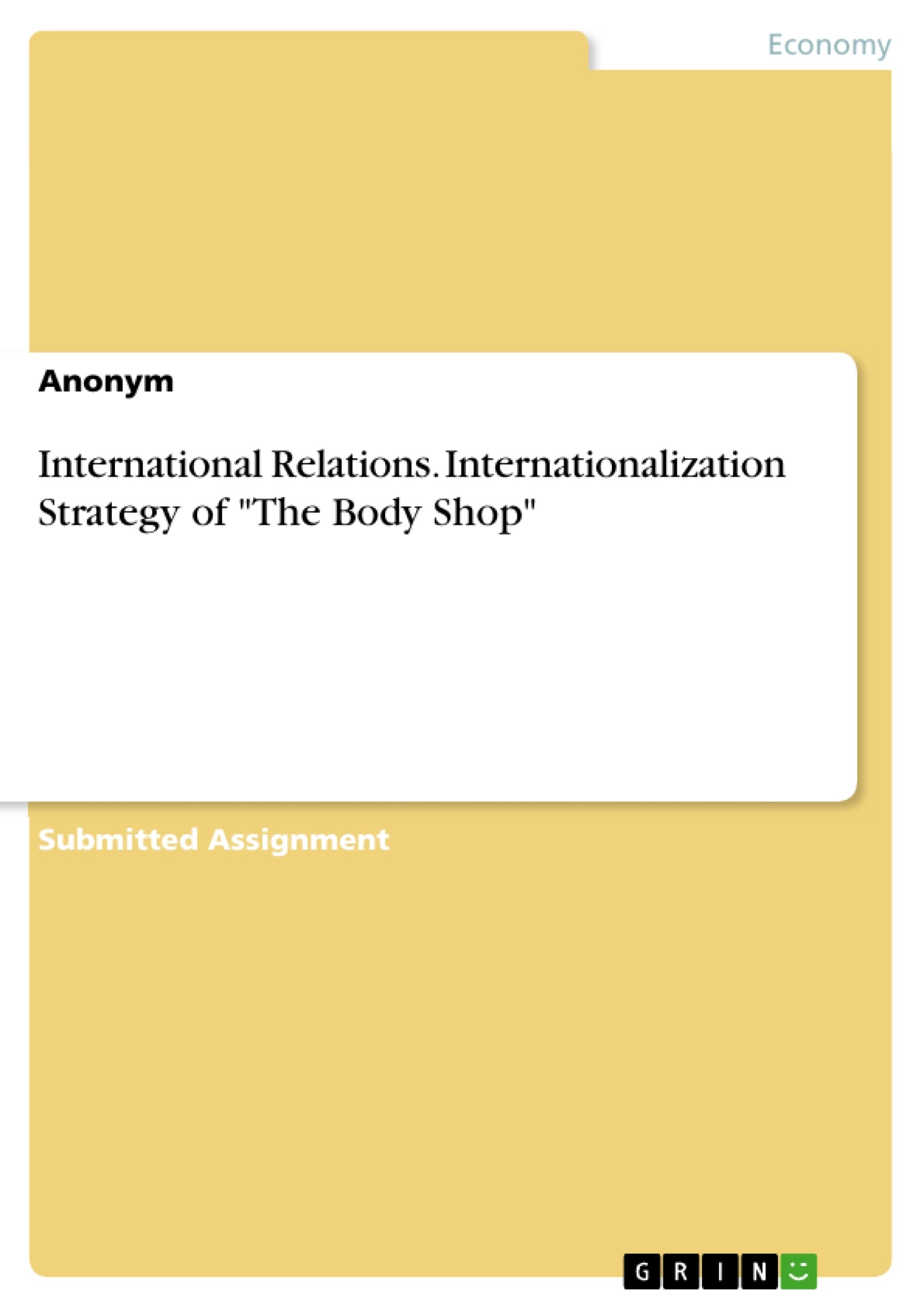This assignments contains a strategic analysis of The Body Shops internationalization.
The Body Shop International Plc has been established in 1976 by Anita Roddick, as the first ethical beauty company to pioneer “a new kind of sustainable business.” (The Body Shop International Plc., 2015) Within a short period, it became a worldwide successful enterprise. Today, The Body Shop is a leader in the movement for creating an ethic of social responsibility among corporations and is one of the most controversial players within that movement. This essay describes the company’s development, from opening the first shop, over its internationalization process, up to the acquisition by L’Oréal.
Therefore, some theoretical background in strategic international management will be explained. With the help of Porters Five Forces, changes within The Body Shops competitive environment will be discussed. By looking at the modes of entering foreign markets, as well as timing strategies, The Body Shops internationalization will be analyzed. Can the OLI-framework answer why the company has engaged in international markets in a certain way?
Especially after entering the U.S. market, the company faced some major challenges. The EPRG model will be applied, to see if those changed the way the company was managed. In 2005 The Body Shop went through a major repositioning, which ended up in the acquisition by L’Oréal. The latest part of this essay will describe the reasons and analyze the strategic position of The Body Shop before the takeover.
Table of Contents
- Introduction
- Theoretical Background
- Strategic Management
- SWOT Analysis
- Competitive Forces
- Internationalization Strategies
- Eclectic Paradigm / OLI-Framework
- EPRG-Model
- Global Timing Strategies
- Country-specific timing strategies
- Modes of Entry
- Franchising
- Strategic Management
- The Body Shop
- History
- Strategy
- Competitive Environment
- Threat of new Entrants
- Bargaining Power of Suppliers
- Bargaining Power of Buyers
- Threat of Substitute Products or Services
- Rivalry Among Existing Competitors
- Internationalization Strategy
- Timing
- Modes of Entry (applying the OLI-paradigm)
- Challenges in the U.S.-market
- Identifying The Body Shops Leadership Conception (applying the EPRG-model)
- Reasons for the companies repositioning in 2005
- Strength
- Weaknesses
- Opportunities
- Threats
- Conclusion
Objectives and Key Themes
This paper examines the internationalization strategy of The Body Shop, a renowned cosmetics retailer, by applying established theoretical frameworks and analyzing the company's historical development, competitive environment, and key decisions.
- Analysis of The Body Shop's internationalization strategy using theoretical frameworks such as the OLI-framework and EPRG-model.
- Examination of the company's competitive environment and key challenges faced during its expansion.
- Evaluation of the company's timing strategies, modes of entry, and strategic decisions in international markets.
- Discussion of the factors that contributed to The Body Shop's repositioning in 2005.
- Identification of the key drivers and challenges associated with successful internationalization in the cosmetics industry.
Chapter Summaries
- Introduction: Provides an overview of the paper's focus on The Body Shop's internationalization strategy and the theoretical frameworks that will be employed.
- Theoretical Background: Introduces essential theoretical concepts from strategic management, including SWOT analysis, competitive forces, and various internationalization strategies. The chapter covers the OLI-framework, EPRG-model, global timing strategies, and different modes of entry, including franchising.
- The Body Shop: This chapter delves into the history, strategy, and competitive environment of The Body Shop. It analyzes the company's competitive advantages and disadvantages, including the threat of new entrants, bargaining power of suppliers and buyers, and the presence of substitute products or services. The chapter further examines the rivalry among existing competitors within the cosmetics industry.
- Internationalization Strategy: This section focuses on The Body Shop's internationalization strategy, encompassing their timing, modes of entry, and challenges faced in the U.S. market. The chapter also explores the company's leadership conception using the EPRG-model.
- Reasons for the companies repositioning in 2005: This chapter examines the factors that prompted The Body Shop's repositioning, analyzing the company's strengths, weaknesses, opportunities, and threats.
Keywords
This paper explores the internationalization strategy of The Body Shop using key concepts from strategic management, including SWOT analysis, competitive forces, OLI-framework, EPRG-model, and various modes of entry. The analysis focuses on the company's timing strategies, competitive environment, and challenges encountered during its expansion, particularly in the U.S. market. The paper also examines the company's leadership conception and the reasons behind its repositioning in 2005.
- Quote paper
- Anonym (Author), 2017, International Relations. Internationalization Strategy of "The Body Shop", Munich, GRIN Verlag, https://www.grin.com/document/376004



